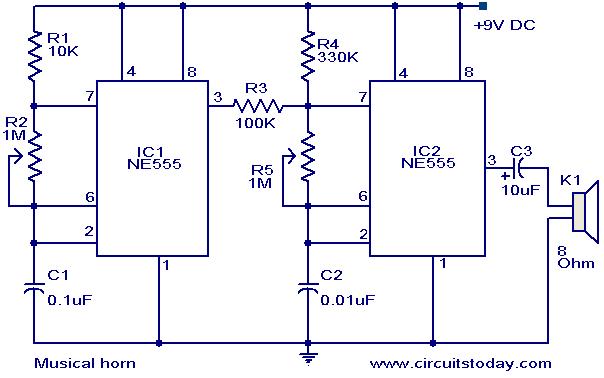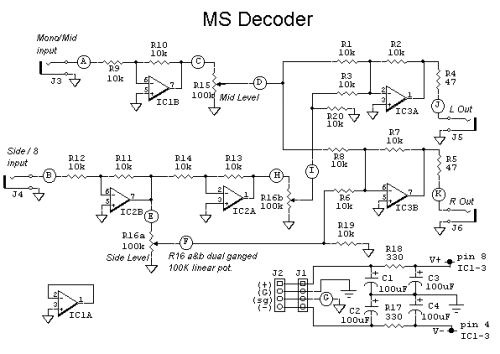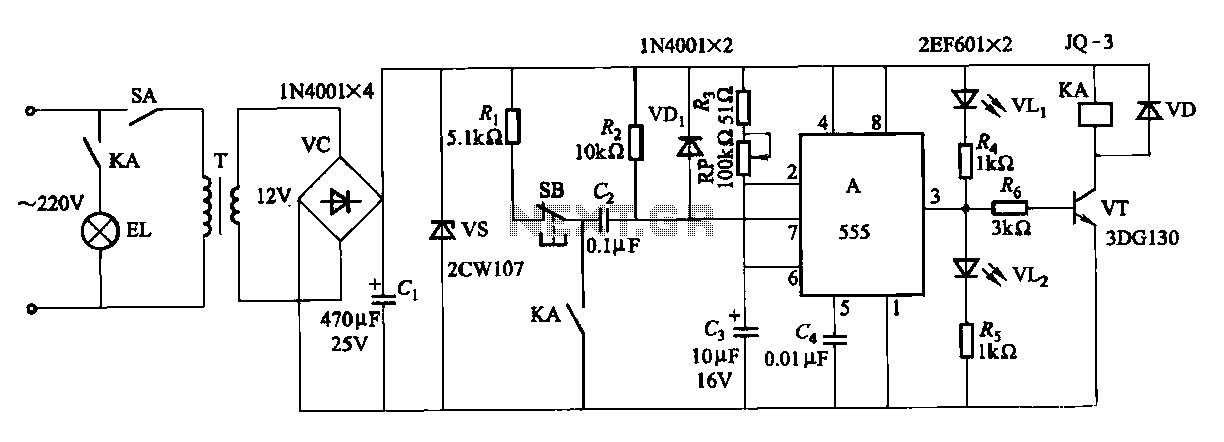
Musical horn circuit

This document outlines a straightforward circuit diagram for a musical horn utilizing two NE555 integrated circuits (ICs). Both ICs are configured as astable multivibrators. The output from the first multivibrator is connected to the discharge pin (pin 7) of the second astable multivibrator. The interaction between the two astable multivibrators generates a musical tone at the output.
The circuit employs two NE555 timers, which are versatile and widely used in various applications due to their reliability and ease of use. In this setup, each NE555 operates in its astable mode, producing continuous square wave signals. The frequency of oscillation for each NE555 can be adjusted by selecting appropriate resistor and capacitor values connected to their timing pins.
The first NE555 timer generates a square wave signal that serves as a trigger for the second NE555 timer. This configuration allows for the modulation of the output frequency of the second NE555 based on the frequency of the first. By adjusting the resistors and capacitors in the circuit, different musical tones can be produced, which can be amplified and used to drive a speaker or buzzer, effectively creating a musical horn.
In practical implementation, the circuit requires careful consideration of component values to ensure that the desired frequency range and tonal quality are achieved. Additionally, the power supply voltage for the NE555 ICs should be selected to match the specifications provided in the datasheet, typically ranging from 4.5V to 15V, to ensure optimal performance. Proper decoupling capacitors should also be included near the power supply pins of the ICs to minimize noise and improve stability.
Overall, this simple circuit design demonstrates the use of NE555 timers in creating sound-producing devices, showcasing their versatility in electronic applications.Here is a simple circuit diagram of a simple musical horn using two NE555 ICs. Two ICs are wired as astable mutivibrators. The output of first multivibrator is given to the discharge (pin 7) of the second astable multivibrator. The combined effect of the astable multivibrators produces a musical tone at the output. 🔗 External reference
The circuit employs two NE555 timers, which are versatile and widely used in various applications due to their reliability and ease of use. In this setup, each NE555 operates in its astable mode, producing continuous square wave signals. The frequency of oscillation for each NE555 can be adjusted by selecting appropriate resistor and capacitor values connected to their timing pins.
The first NE555 timer generates a square wave signal that serves as a trigger for the second NE555 timer. This configuration allows for the modulation of the output frequency of the second NE555 based on the frequency of the first. By adjusting the resistors and capacitors in the circuit, different musical tones can be produced, which can be amplified and used to drive a speaker or buzzer, effectively creating a musical horn.
In practical implementation, the circuit requires careful consideration of component values to ensure that the desired frequency range and tonal quality are achieved. Additionally, the power supply voltage for the NE555 ICs should be selected to match the specifications provided in the datasheet, typically ranging from 4.5V to 15V, to ensure optimal performance. Proper decoupling capacitors should also be included near the power supply pins of the ICs to minimize noise and improve stability.
Overall, this simple circuit design demonstrates the use of NE555 timers in creating sound-producing devices, showcasing their versatility in electronic applications.Here is a simple circuit diagram of a simple musical horn using two NE555 ICs. Two ICs are wired as astable mutivibrators. The output of first multivibrator is given to the discharge (pin 7) of the second astable multivibrator. The combined effect of the astable multivibrators produces a musical tone at the output. 🔗 External reference





